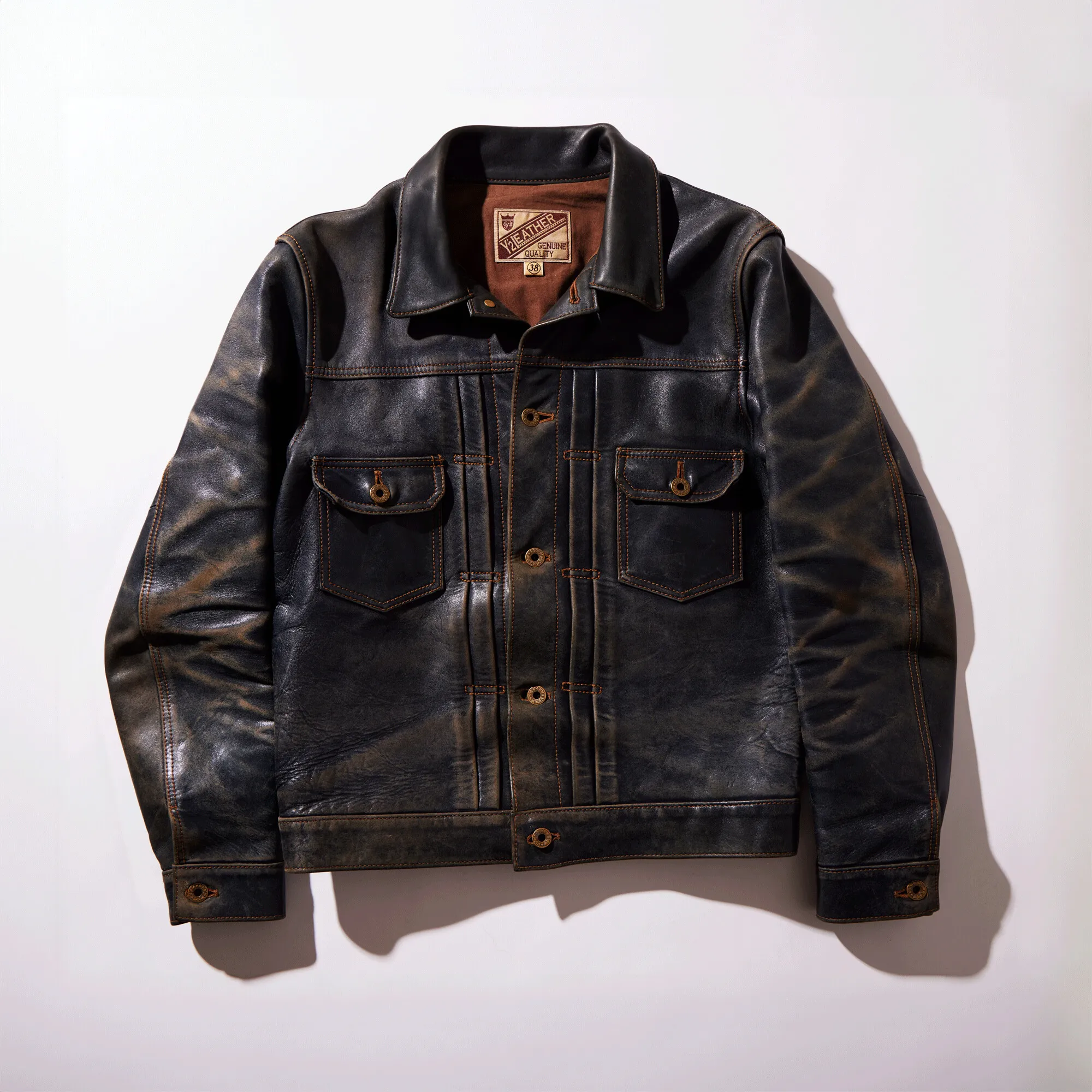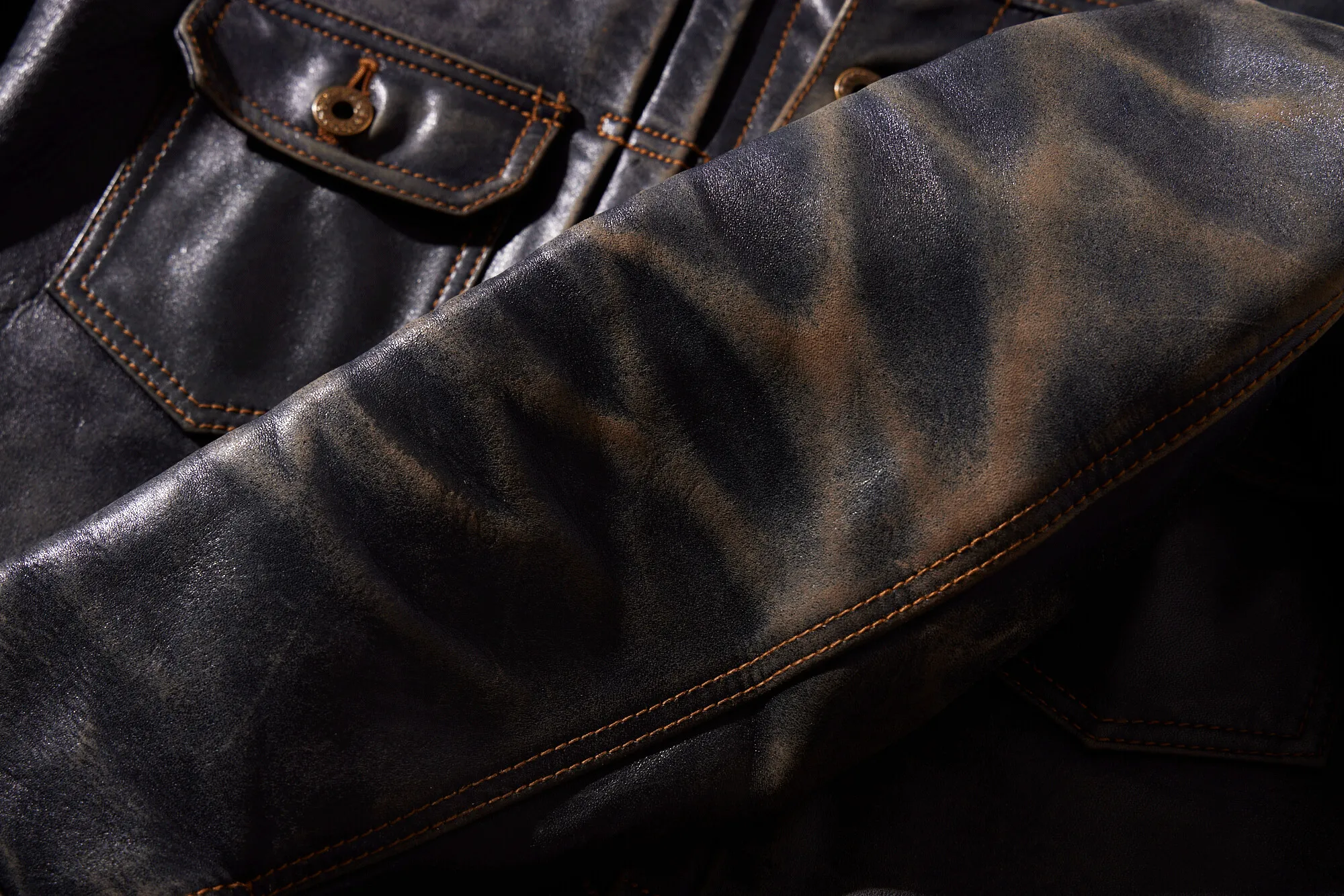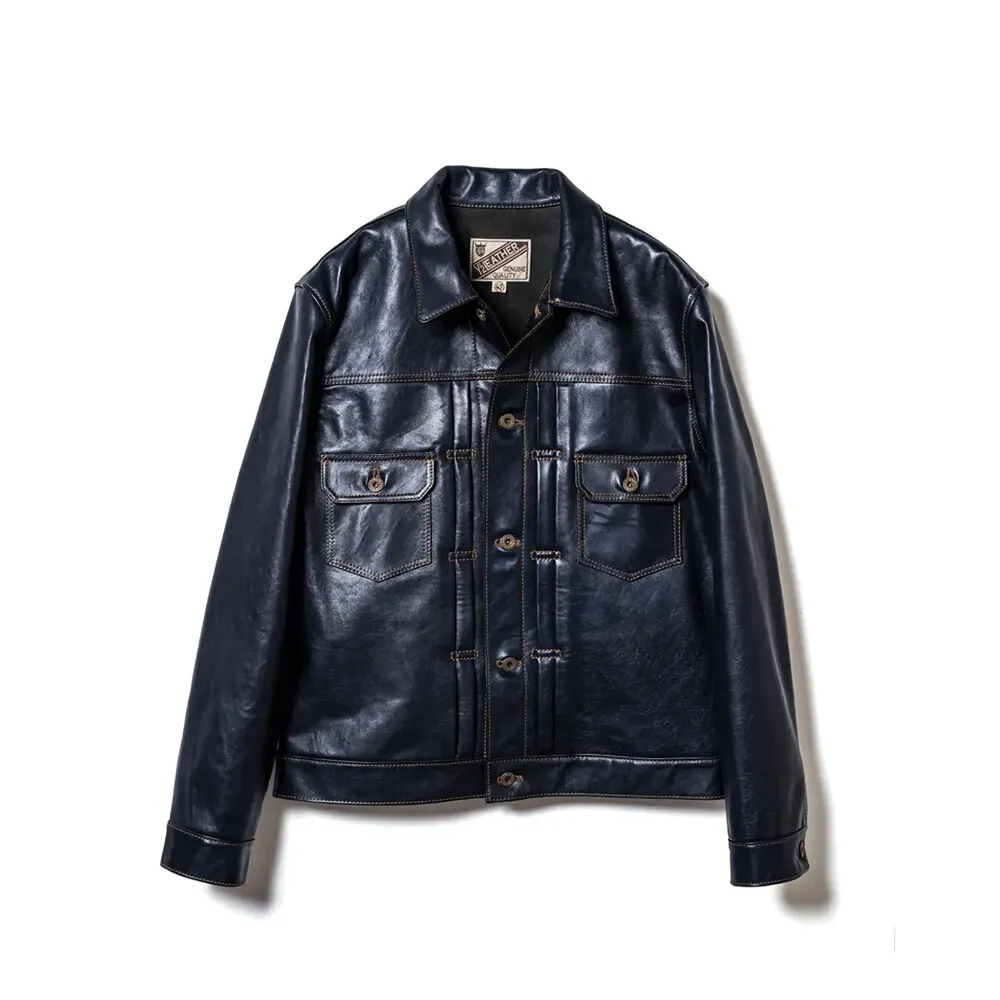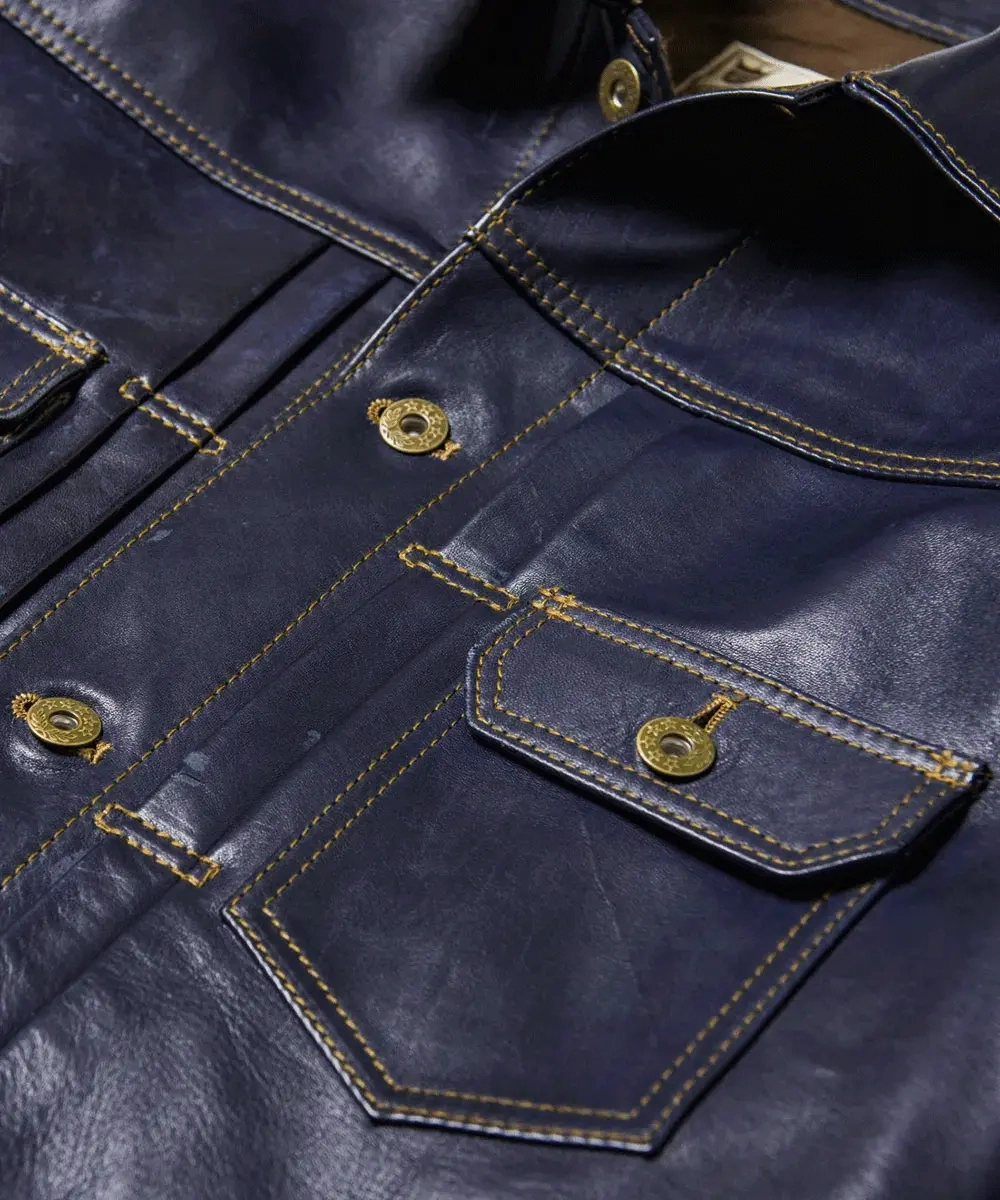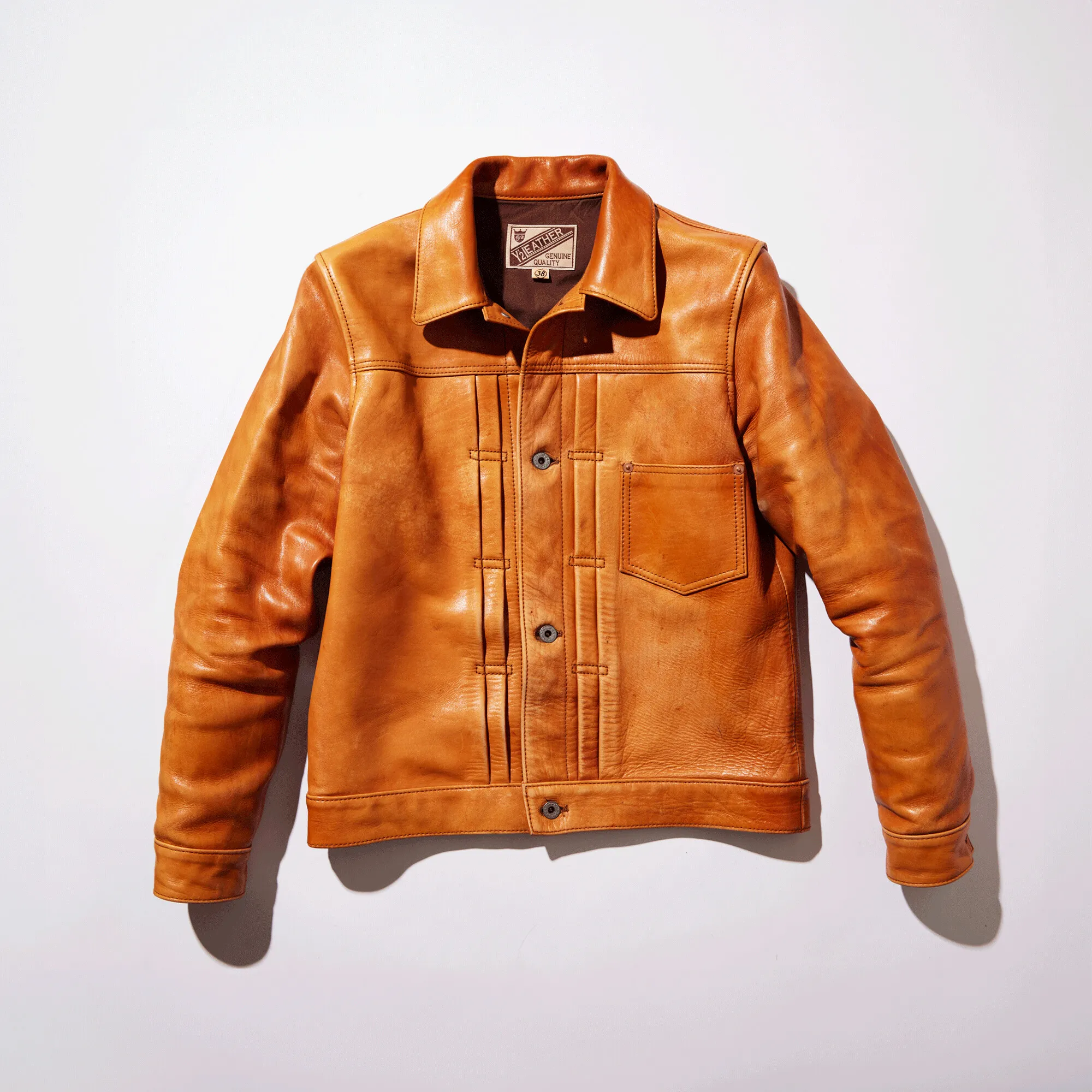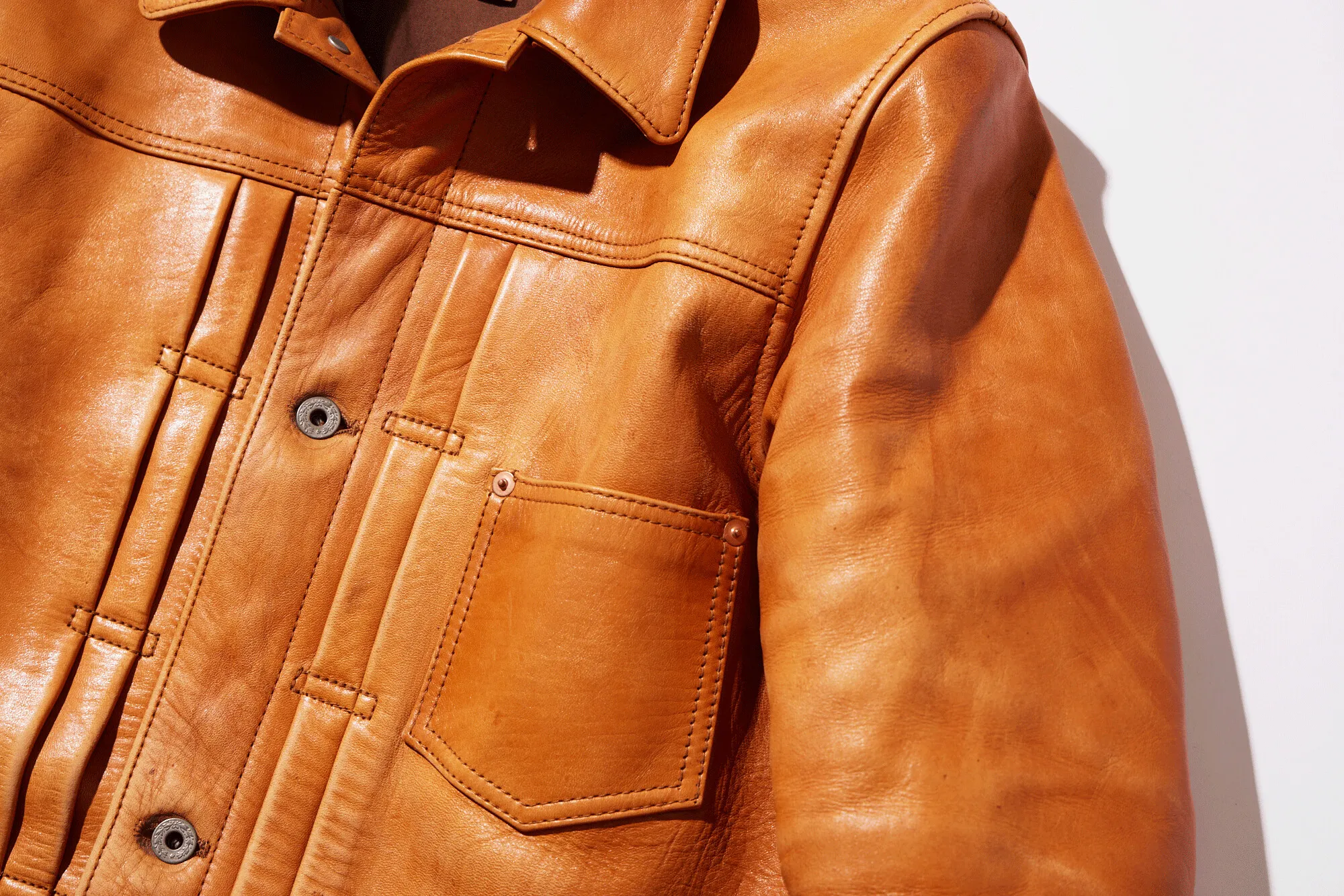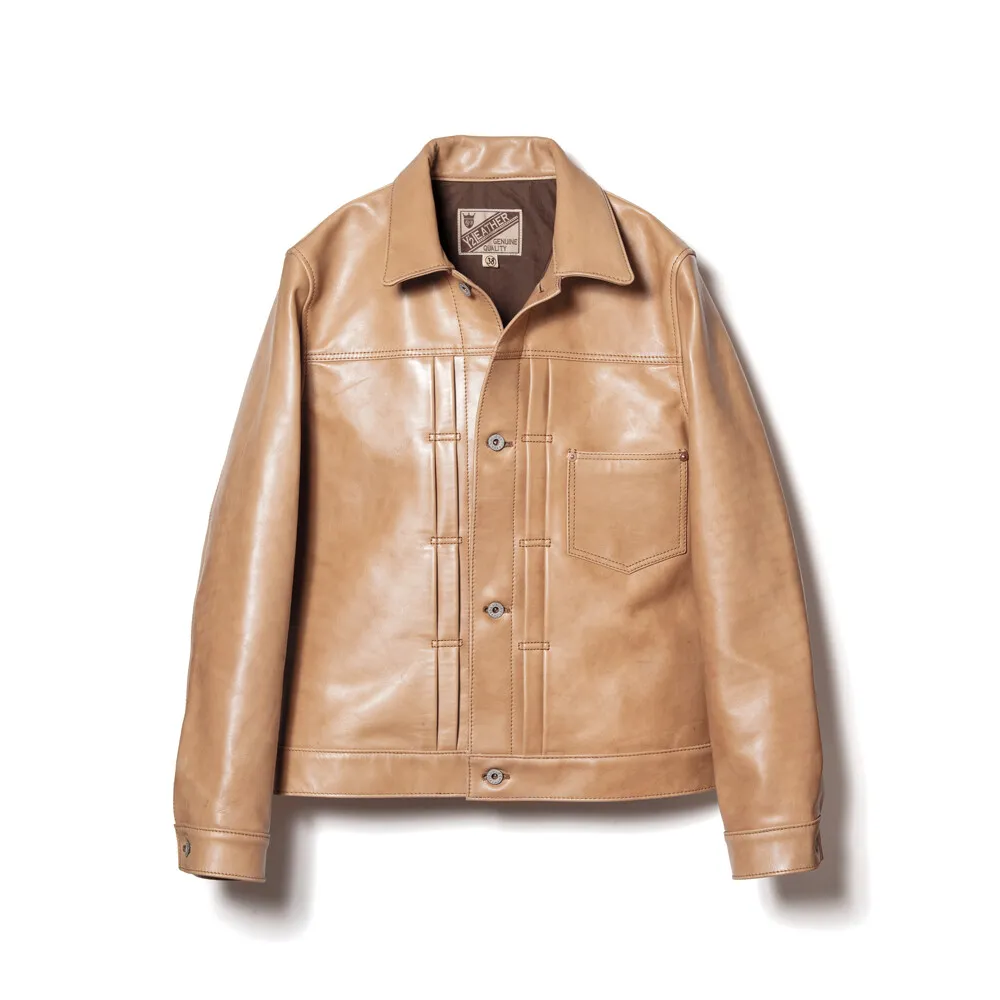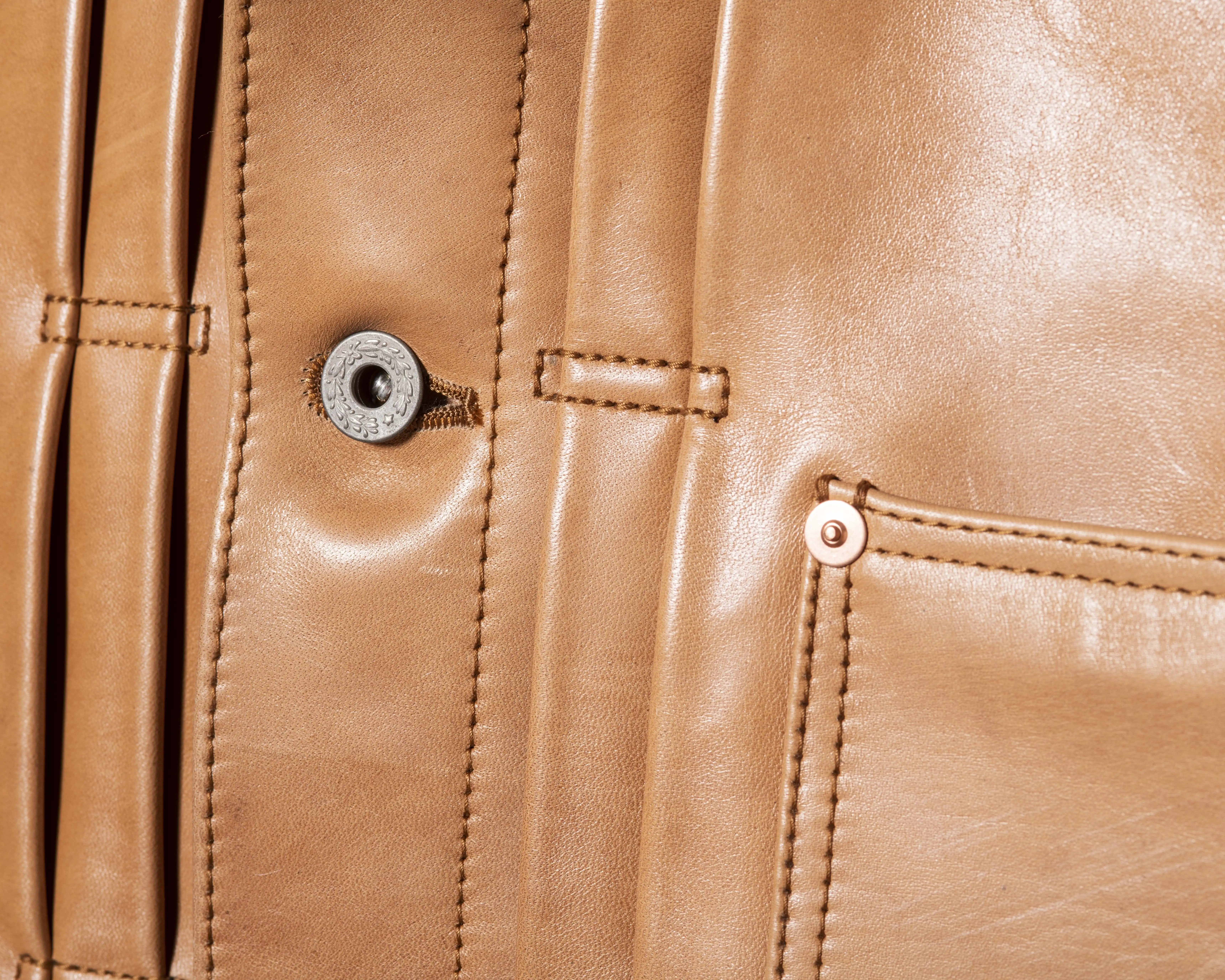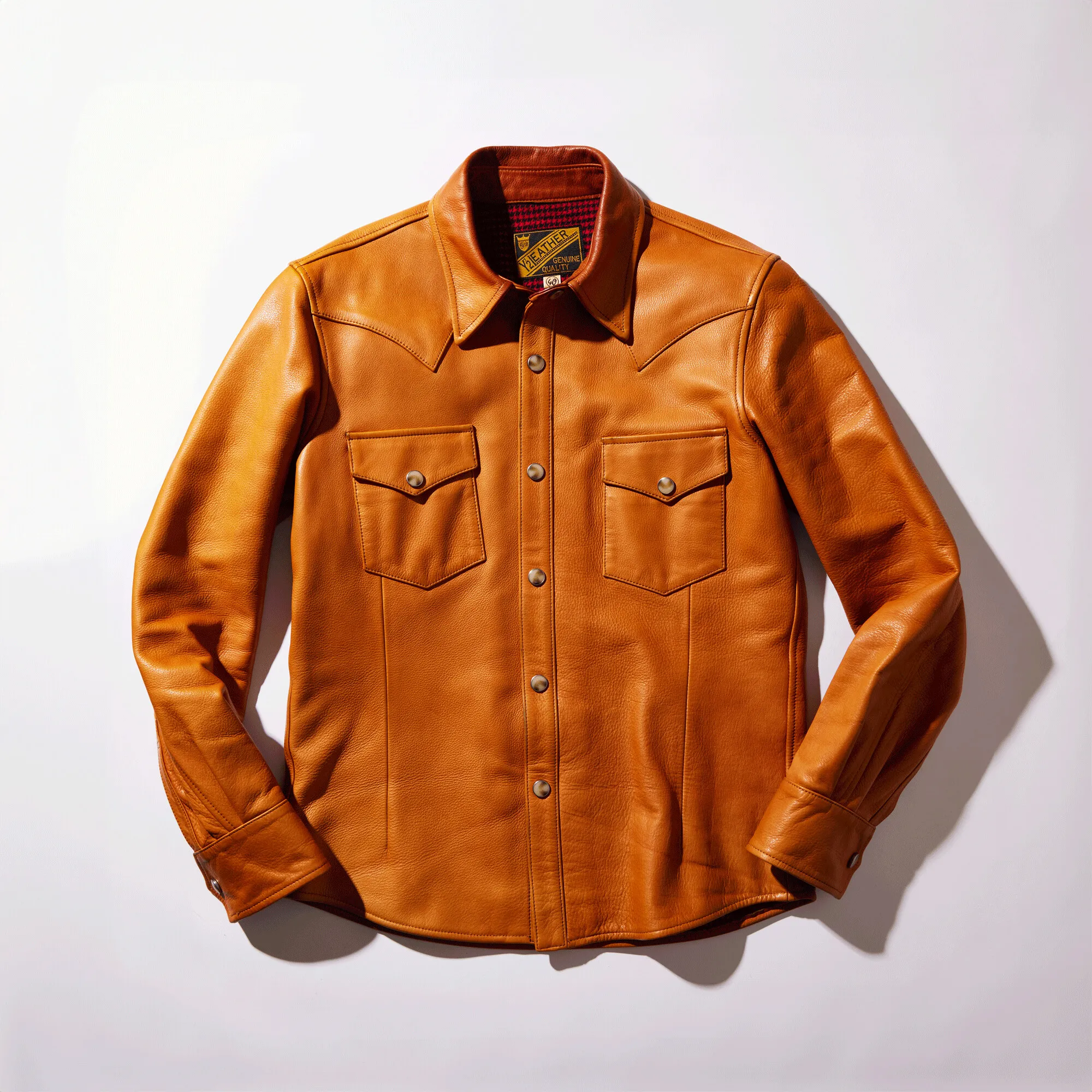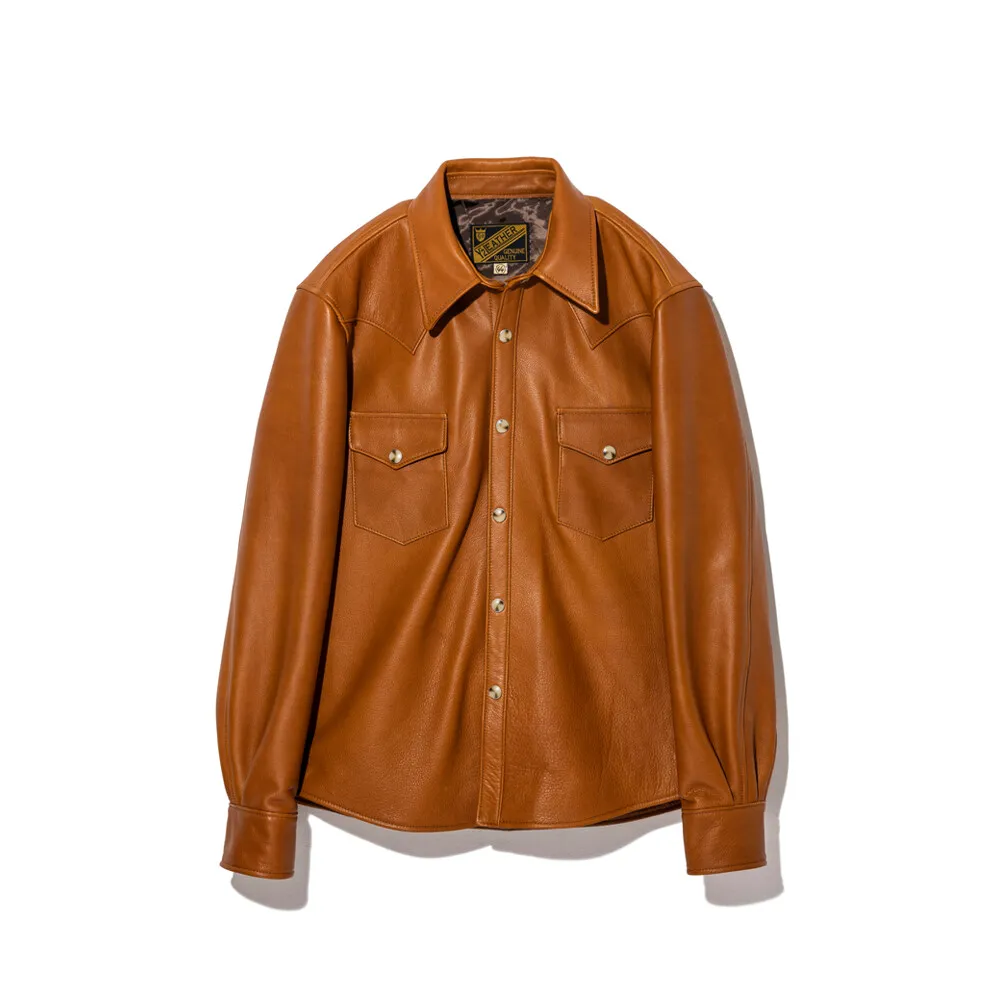2025.11.15
Y’2 LEATHER Aging & Leather Materials
A leather jacket looks great the moment you hold it in your hands—
but we believe its true beauty only begins to appear once you start wearing it.
The tougher the leather, the more stubborn it can be at first:
the collar stands up, the sleeves are stiff,
and fastening the buttons may even make your fingertips hurt.
Many pieces begin life as a true “wild horse.”
But with every wear, the leather starts to mold to your body,
developing natural creases and a rich sheen—
slowly becoming a one-of-a-kind companion that belongs only to you.
At Y’2 LEATHER, our firmer leathers (such as Eco Horse) are carefully thinned only at high-stress points and reinforced with interlining to maintain strength.
These small, precise steps add up over time, creating a depth of character and expression after 5 or 10 years that simply cannot be achieved through shortcuts.
Many customers at our flagship store ask, “What will the aging look like?”
Aging varies based on lifestyle and body movement,
but as a reference, we present side-by-side images of well-worn pieces and brand-new ones.
(Featured items include models showcased in HailMary Magazine.)
① Indigo Horse [IB-141]
Provided by Real Deal / Worn approx. 2 years
Indigo Horse begins with a pale foundation dye,
followed by a meticulous hand-dyed application of indigo—
a technique that is extremely challenging due to indigo’s poor compatibility with leather.
Stability, color transfer, and consistency all required extensive research.
From concept to completion, the material took over three years to perfect.
The store manager at Real Deal—a rider living in the colder climate of Sendai—
wore it almost year-round except during midsummer.
Even with very little maintenance, the jacket has developed
a deep and distinctive aging unique to indigo-dyed horsehide.
② Persimmon-Tannin Horsehide [KB-140-T]
Provided by CELLULOID / Worn approx. 2 years
Persimmon tannin dyeing is one of the most difficult natural dye processes for leather.
We succeeded in applying this dye to our signature horsehide,
creating a material that is both traditional and uniquely expressive.
No pigments are used—only persimmon tannin—
so natural scratches and scuffs appear visibly on the surface.
This is the nature of natural dyeing and a deliberate choice to preserve the leather’s authentic texture.
Because it is sensitive to UV light,
we recommend storing it in a garment bag.
Each piece is finished with a hand-applied second coat (“double dyeing”),
giving the leather a deeper, richer tone and distinctive aging.
Selection is extremely strict; sometimes fewer than 1 out of 100 hides is usable.
For this reason, persimmon-tanned horsehide is limited to three models per year.
③ Steer Oil [SS-13]
Provided by LUA / Worn approx. 2 years
Steer Oil is crafted through a slow drum-dyeing process using only water and dye—
a finish close to natural “naked leather.”
No pigments are used, allowing the natural character of the leather to shine through.
The leather is astonishingly soft, with a moist, oily feel.
Perfect for those who find horsehide too rigid or prefer a jacket
that is lightweight, comfortable, and easy to wear daily.
Because it is water-dyed, scratches, marks, and color unevenness (especially in lighter colors like camel) are part of the material’s character.
These variations make each jacket truly one of a kind.
A Final Word from Y’2 LEATHER
Leather changes slowly, just like the life of the person who wears it.
You don’t need special techniques or complicated care.
What matters most is simply:
“Wear it with love.”
If you enjoy the process and keep wearing it,
the leather will always respond—
and before long, it will become
your most trusted partner.
There is no correct way to age a leather jacket.
There is no need to overthink it.
Just wear it, enjoy it, and let time shape it.
We hope your Y’2 LEATHER jacket becomes
a truly unique piece that tells your own story.

